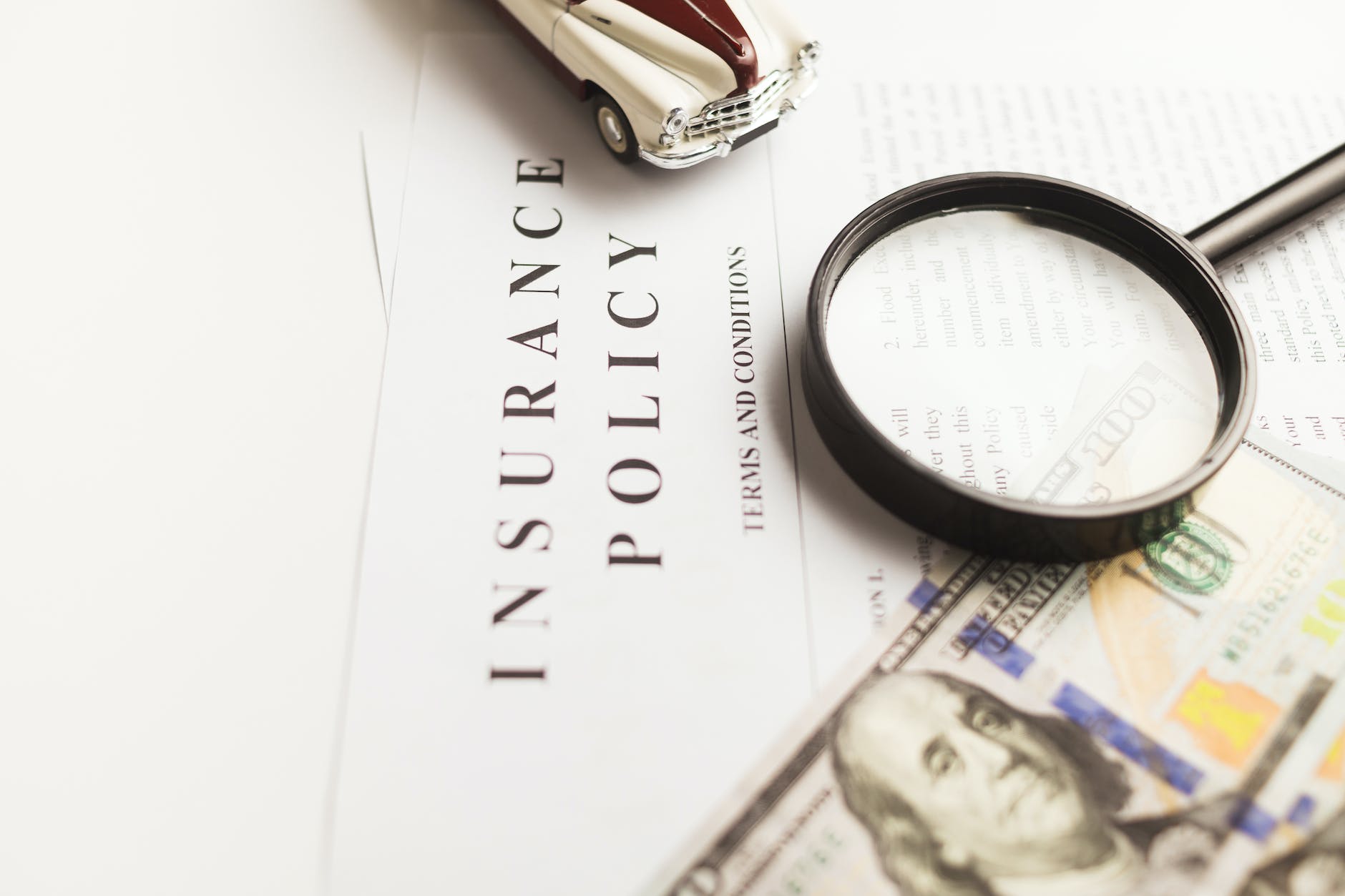Table of Contents
- Introduction
- Factors Influencing High Car Insurance Premiums
- 2.1 Age and Driving Experience
- 2.2 Location and Population Density
- 2.3 Vehicle Type and Safety Features
- 2.4 Driving Record and Claims History
- 2.5 Credit Score and Financial Stability
- 2.6 Insurance Coverage and Deductibles
- 2.7 Gender and Marital Status
- 2.8 Annual Mileage
- 2.9 Insurance Company Policies
- Strategies to Reduce Car Insurance Premiums
- 3.1 Comparison Shopping
- 3.2 Maintaining a Clean Driving Record
- 3.3 Improving Credit Score
- 3.4 Adjusting Coverage and Deductibles
- 3.5 Bundling Insurance Policies
- 3.6 Installing Safety Features
- 3.7 Driving Less
- 3.8 Exploring Discounts and Special Programs
- Conclusion
- FAQs
- 5.1 Can I negotiate my car insurance premium?
- 5.2 How does my credit score affect my car insurance premium?
- 5.3 Is it true that red cars have higher insurance premiums?
- 5.4 What should I do if I can’t afford my car insurance premium?
- 5.5 Do car insurance premiums decrease with age?
1. Introduction
Car insurance is a vital aspect of vehicle ownership in America. It provides financial protection in the event of accidents, theft, or damage to your vehicle. However, many Americans face the challenge of high car insurance premiums. In this article, we will explore the factors that contribute to high insurance premiums and provide strategies to help you reduce them.
2. Factors Influencing High Car Insurance Premiums
2.1 Age and Driving Experience
Age and driving experience play a significant role in determining car insurance premiums. Younger, inexperienced drivers tend to have higher premiums due to their higher likelihood of accidents. Insurance companies consider data that shows younger drivers are statistically more prone to risky behavior on the road.
2.2 Location and Population Density
Where you live and the population density of your area affect your car insurance premiums. Urban areas with higher traffic volumes and more accidents generally result in higher premiums. Additionally, areas with higher crime rates may lead to an increased risk of vehicle theft, impacting insurance costs.
2.3 Vehicle Type and Safety Features
The type of vehicle you drive directly affects your insurance premiums. Expensive cars or those with high-performance capabilities usually require higher premiums. On the other hand, vehicles equipped with advanced safety features, such as anti-lock brakes, airbags, and collision warning systems, can lower your premiums.
2.4 Driving Record and Claims History
Your driving record and claims history have a significant impact on your insurance premiums. Insurance companies view drivers with a history of accidents, traffic violations, or filed claims as higher risk. Maintaining a clean driving record and avoiding accidents can help keep your premiums lower.
2.5 Credit Score and Financial Stability
Surprisingly, your credit score can influence your car insurance premiums. Studies have shown a correlation between credit history and the likelihood of filing insurance claims. Individuals with lower credit scores may face higher premiums due to the perceived higher risk.
2.6 Insurance Coverage and Deductibles
The level of insurance coverage you choose and the deductibles you select can impact your premiums. Higher coverage limits and lower deductibles typically result in higher premiums. Assess your needs carefully and choose coverage and deductibles that strike a balance between protection and affordability.
2.7 Gender and Marital Status
Insurance companies often consider gender and marital status when determining premiums. Young unmarried males tend to have higher premiums than their female counterparts or married individuals. However, these factors may vary depending on the insurance provider and state regulations.
2.8 Annual Mileage
The distance you drive annually can affect your insurance premiums. Drivers with longer commutes or those who spend more time on the road are at a higher risk of accidents. Consequently, insurance companies may charge higher premiums to compensate for this increased exposure.
2.9 Insurance Company Policies
Each insurance company has its own policies and pricing strategies. Premiums can vary significantly between providers for the same coverage. It’s crucial to compare quotes from multiple insurers to find the best rates and coverage options.
2.10 State Regulations and Legal Environment
State regulations and the legal environment can have a significant impact on car insurance premiums. Each state has its own set of regulations regarding insurance coverage, liability limits, and minimum coverage requirements. States with more stringent regulations or higher minimum coverage limits may result in higher insurance premiums.
The legal environment of a state, including the prevalence of lawsuits and the size of jury awards, can also affect insurance premiums. States with a higher likelihood of litigation and larger settlements may experience higher insurance costs to account for the increased risk.
2.11 Population Density
Population density is another crucial factor influencing car insurance premiums. Highly populated areas tend to have more traffic congestion, which can lead to an increased risk of accidents. Additionally, densely populated areas often have higher crime rates, including auto theft and vandalism, which can contribute to higher insurance premiums.
2.12 Traffic Congestion and Accident Rates
States with high traffic congestion and elevated accident rates typically experience higher car insurance premiums. Increased traffic congestion can result in more frequent accidents, leading to higher claim payouts for insurance companies. As a result, insurance premiums may be adjusted to reflect the increased risk associated with congested roadways.
2.13 Economic Factors
Economic factors, such as income levels and unemployment rates, can impact car insurance premiums. States with higher average incomes may have higher insurance premiums due to the potential for larger liability claims. Similarly, states with higher unemployment rates may see higher premiums as drivers may be more inclined to file claims to offset financial burdens.
2.14 Crime Rates and Auto Theft
Crime rates, particularly auto theft rates, play a significant role in car insurance premiums. States with higher crime rates and a greater prevalence of auto theft tend to have higher insurance premiums to account for the increased risk of vehicle loss or damage. Insurance companies consider the likelihood of theft and the cost of replacing stolen vehicles when determining premiums.
2.15 Weather and Natural Disasters
Weather patterns and the frequency of natural disasters can affect car insurance premiums. States prone to severe weather conditions, such as hurricanes, tornadoes, or hailstorms, may experience higher premiums to cover potential damages caused by these events. Insurance companies factor in the risks associated with specific weather patterns when setting premiums.
2.16 Health Care Costs
Health care costs can indirectly impact car insurance premiums. States with higher medical costs, including ambulance services, emergency room visits, and rehabilitation expenses, may have higher insurance premiums. Injuries resulting from car accidents can contribute to these increased medical costs, which are factored into the overall insurance premiums.
2.17 Insurance Requirements and Minimum Coverage
Each state has its own set of insurance requirements and minimum coverage limits. States with higher minimum coverage limits often result in higher insurance premiums. Additionally, states that require additional coverage types, such as personal injury protection (PIP) or uninsured/underinsured motorist coverage, may experience higher premiums compared to states with fewer coverage requirements.
3. States with High Car Insurance Premiums
While car insurance premiums can vary across the country, certain states are known for consistently having high insurance rates. Let’s explore some of these states:
3.1 Michigan
Michigan consistently ranks among the states with the highest car insurance premiums. The state’s unique no-fault insurance system, which provides unlimited medical benefits for injured parties, significantly contributes to the high cost of car insurance. The high prevalence of auto theft in certain areas of the state also contributes to elevated premiums.
3.2 Louisiana
Louisiana is another state known for its high car insurance premiums. The state has a high rate of accidents and auto theft, leading to increased claim payouts by insurance companies. Additionally, Louisiana has a legal environment prone to litigation, which further drives up insurance costs.
3.3 Florida
Florida’s car insurance premiums are impacted by several factors, including a high population density, a large number of elderly drivers, and a higher risk of accidents due to its vast coastline and tourist attractions. The state’s no-fault insurance system and the prevalence of fraudulent claims also contribute to elevated premiums.
3.4 New York
New York is known for its high cost of living, and car insurance premiums are no exception. Factors such as high population density, heavy traffic congestion in metropolitan areas, and the increased risk of accidents contribute to elevated insurance rates. Additionally, the state’s no-fault insurance system and the legal environment contribute to higher premiums.
3.5 California
California is another state with relatively high car insurance premiums. The state’s large population and high traffic volumes result in a higher risk of accidents. California’s stringent regulations and coverage requirements also contribute to the higher cost of insurance. Furthermore, factors such as weather-related risks, auto theft rates, and litigation-prone legal environment contribute to the overall premiums.
4. Strategies to Reduce Car Insurance Premiums
4.1 Comparison Shopping
One of the most effective ways to reduce car insurance premiums is by comparing quotes from different insurance companies. Take the time to research and obtain quotes from multiple providers. This allows you to identify the best coverage options at competitive rates.
4.2 Maintaining a Clean Driving Record
Maintaining a clean driving record is crucial for keeping your insurance premiums affordable. By avoiding accidents, traffic violations, and claims, you demonstrate responsible driving behavior. Insurance companies may offer discounts or lower premiums for drivers with a clean record.
4.3 Improving Credit Score
Improving your credit score can positively impact your car insurance premiums. Paying bills on time, reducing debt, and managing credit responsibly can help increase your credit score. A higher credit score may make you eligible for lower insurance premiums.
4.4 Adjusting Coverage and Deductibles
Evaluate your insurance coverage regularly to ensure it aligns with your needs. Consider adjusting your coverage and deductibles to strike a balance between protection and cost. Increasing deductibles and reducing coverage limits can lower your premiums, but ensure you can afford the deductible if an accident occurs.
4.5 Bundling Insurance Policies
Many insurance providers offer discounts when you bundle multiple policies, such as car and home insurance, with the same company. Bundling can lead to significant savings on your premiums. Contact your insurance company to explore bundling options.
4.6 Installing Safety Features
Equipping your vehicle with safety features can lead to lower insurance premiums. Anti-theft devices, GPS tracking systems, and driver-assist technologies are some examples of safety features that may qualify you for discounts. Consult your insurance provider to learn which features can help reduce your premiums.
4.7 Driving Less
Reducing your annual mileage can lower your insurance premiums. If possible, carpool, use public transportation, or work from home to decrease the number of miles driven. Inform your insurance company about any significant changes in your driving habits to potentially qualify for lower premiums.
4.8 Exploring Discounts and Special Programs
Insurance companies often offer discounts and special programs that can help reduce premiums. These may include discounts for good students, safe drivers, or members of certain organizations. Inquire about available discounts to take advantage of potential savings.
5. Conclusion
High car insurance premiums in America can be attributed to various factors, including age, location, driving record, and credit score. However, by understanding these factors and implementing strategies such as comparison shopping, maintaining a clean driving record, and adjusting coverage, you can take steps to reduce your premiums. Remember to explore discounts and special programs offered by insurance companies to maximize your savings.
6. Frequently Asked Questions
1. Can I negotiate my car insurance premium?
While insurance premiums are generally set by insurance companies based on various factors, it’s worth discussing your options with your insurance provider. In some cases, they may be able to offer discounts or adjust your premium based on your circumstances.
2. How does my credit score affect my car insurance premium?
Insurance companies consider credit scores as an indicator of risk. Individuals with higher credit scores are typically seen as less likely to file claims, resulting in lower premiums. It’s important to maintain a good credit score to potentially secure lower insurance premiums.
3. Is it true that red cars have higher insurance premiums?
No, the color of your car does not directly impact your insurance premiums. Factors such as the make, model, age, and safety features of your vehicle are what influence the cost of insurance.
4. What should I do if I can’t afford my car insurance premium?
If you’re struggling to afford your car insurance premium, explore options such as adjusting your coverage, increasing deductibles, or seeking quotes from different insurance providers. Additionally, you can reach out to your current provider to discuss potential discounts or alternative payment plans.
5. Do car insurance premiums decrease with age?
In general, car insurance premiums tend to decrease with age as drivers gain more experience on the road. However, other factors such as driving record, claims history, and the type of vehicle driven also influence premium costs. It’s essential to regularly review your coverage and explore options to ensure you’re receiving the best rates as you age.



